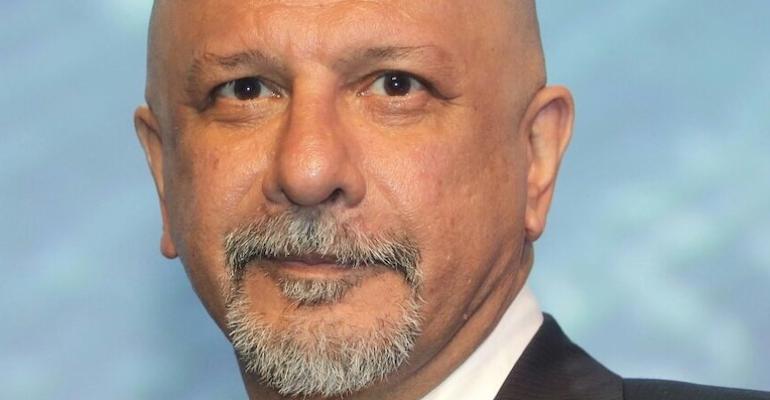In the first in a series of interviews ahead of Seatrade Maritime Logistics Middle East, Fazel Fazelbhoy, CEO, Synergy Offshore, spoke to Seatrade Maritime News about developments in the industry.
“After seven years in the wilderness, the OSV market has finally started emerging from the trough that it’s been in since 2014. 2022 was a turnaround year, with utilisation moving into the upper 80-percentile-levels towards the end of the year. Rates have also finally started inching upwards, which augurs well for 2023. This means we are now on the cusp of the next ‘super cycle’,” he said.
“From an operational point of view, almost all sectors of the OSV market are doing well, the dominant question being: ‘How do we get our hands on more vessels?’”
He said that the term ‘shortages’ was a word not heard for many years. “If a few companies are having problems, they are probably for non-operational reasons—mostly historical—such as over-extension, debt burden or other either valuation or cash flow-related issues.”
National oil company (NOC) investment plans portend significant investment in the regional offshore industry in coming years. Saudi Aramco, Abu Dhabi National Oil Company (ADNOC) and the rebranded QatarEnergy are expected to be the three standout players in terms of spending levels.
“All three dominant NOCs have burgeoning exploration and production capex budgets for the next five years. QatarEnergy is focusing on the North Field Expansion projects and plans on expanding its output from 77 million tonnes per annum (mtpa) to 126mtpa, with first LNG by 2025. The budget is over $50bn, with $29bn already sanctioned in Phase 1,” he said.
With record-breaking net profits of $110bn in 2021, and $140bn expected to close in 2022, Aramco intends to lead the way for energy development in the region. It plans to expand its output by 1mbpd, to 13mbpd, by 2027. Capex for 2022 and 2023 is expected to be in the range of $50bn per annum. Contracted rigs went from 52 in 2021 to 78 in 2022, a 50% increase. The Aramco Marine Department expects contracted OSVs to also see a 50% increase by 2027—up from 300 to 450 vessels, he said.
“ADNOC also expects to increase its capacity by 1m bpd, to 5mbpd, by 2027. ADNOC expansion plans call for an allocation of $150bn over the next five years, which equates to $30bn per annum. In order to monetise their assets, ADNOC has listed two subsidiaries—and ADNOC Gas is in the process. ADNOC now owns 32 offshore rigs and recently acquired Zakher Marine, with its 24 jack-up rigs and 38 OSVs. Their current managed fleet is now in the range of 300 vessels,” he said.
A wave of offshore-related Initial public offerings (IPOs) on regional stock markets is expected to further drive the progress of the offshore industry in the region in coming years.
“IPO mania seems to be limited to major NOCs, with Aramco and ADNOC leading the way. OSV companies are not there yet. However, we are seeing a period of consolidation in the industry with government-linked entities going on a buying spree,” Fazelbhoy said.
“We have seen DP World, through P&O Maritime, acquire Topaz Energy and Marine; ADNOC acquire Zakher Marine International; Abu Dhabi Ports have entered into joint ventures with Alliance Marine and have made vessel acquisitions as well; and finally we have seen Shuaa Capital buy up both Stanford Marine and Alliance Marine. Now that these companies are reaching critical mass, they are all candidates for IPO’s in the not too distant future.”
The 2023 United Nations Climate Change Conference, also known as COP 28, begins in Dubai in November, and, like other industry veterans, Fazelbhoy will be closely watching the messaging coming from the UAE and the region. It will the third time the event was hosted by an OPEC member, after Qatar in 2012 and Indonesia in 2007. Egypt played host last year.
Fazelbhoy said ADNOC was to invest $15bn in a range of projects by 2030 to help accelerate its low-carbon strategy. “I am excited by the leadership of Dr. Sultan Ahmed Al Jaber, ADNOC CEO, who is also going to preside over COP28. He has committed to a green future with plans to invest $165bn in clean energy by 2050,” he said.
“However, it is important to note that the switch to green energy simply cannot be done overnight,” he said. “There just isn’t enough infrastructure yet. Today, only about 12% of the global energy mix is ‘green.’ The way to future fuels is to invest in current fuels—hydrocarbons—for now, until we implement our green ambitions. Importantly, we have leadership that is aware of the dilemma and has made public commitments to steer us towards a more balanced and sustainable future.”
Fazel Fazelbhoy, CEO, Synergy Offshore, is speaking at Seatrade Maritime Logistics Middle East, on May 16-18, in Dubai, UAE.
Copyright © 2024. All rights reserved. Seatrade, a trading name of Informa Markets (UK) Limited.
Add Seatrade Maritime News to your Google News feed.  |


